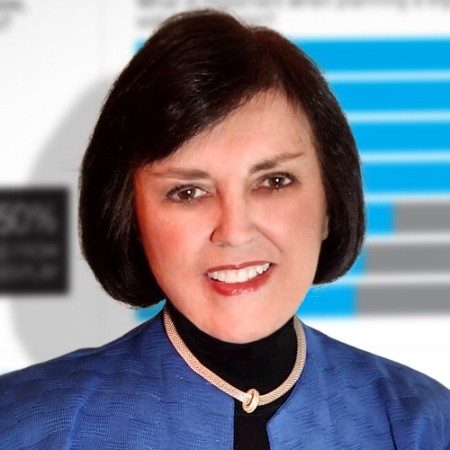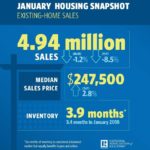OTHER NEWS
Cottonwood Title Inks Deal to Protect Wire Transactions
- Monday, 25 February 2019
- Originating

Cottonwood Title Insurance Agency Inc., one of the largest independent title agencies in Utah, has inked a deal for SafeWire, a platform designed to protect the wire transactions facilitated by agents in North-Central Utah.
SafeChain, which specializes in wire-fraud prevention software and blockchain implementation for the land title industry, developed SafeWire.
“At Cottonwood Title, we pride ourselves on our speed, accuracy and ability to close transactions on schedule, but equally as important to us is ensuring that our clients’ funds do not fall into the wrong hands,” said Cort Ashton, vice president of escrow at Cottonwood Title. “SafeWire provides our customers with peace of mind in knowing their wire transactions are protected without impacting the excellent service our customers and partners expect.”
[adbutler zone_id="326324"]
[adbutler zone_id="326327"]
Leveraging both bank-grade authentication and blockchain technology, SafeWire uses this technology to prevent fraudsters from interfering with real-estate-wire transactions. Through the platform, title agents can verify the identities of the buyer and seller, as well as store and transmit in a secure fashion wiring instruction to prevent fraudsters from intercepting and tampering with this information.
In addition, title agents can authenticate ownership of bank accounts to ensure funds are being sent to and received by authorized parties
“The pace at which real estate wire fraud is increasing has far outstripped the industry’s ability to address the issue through traditional means,” said Tony Franco, CEO and co-founder of SafeChain.
Read more...
In an AI World Originators' Roles Will Focus on Creating Loan Demand
- Sunday, 24 February 2019
- Originating

By Pat Sherlock
I believe that in the not-too-distant future, artificial intelligence technology will be integral to the operational side of the business and will usurp functions that originators have traditionally performed. No longer will originators determine product slotting for their customers. Computers can do that better and faster. Just think how fast Big Blue's Watson AI decisions are when competing against world champion chess players.
[caption id="attachment_9789" align="alignleft" width="335"] Pat Sherlock[/caption]
Pat Sherlock[/caption]
Going forward, originators will be tasked with creating loan demand which requires that producers engage with prospects earlier in the home-buying process.
In other words, they must be micro-influencers.
What is a micro-influencer? While there are various definitions, the one I like to use is a salesperson who has over 3,000 people following them on social media platforms. Whether it is LinkedIn, Facebook or Instagram, the platform doesn't matter. They are recognized for being trusted advisers and according to James Tait's TRIBE blog: "They're relatable, genuine and trustworthy. Three things which are pretty useful when it comes to marketing. Launching an influencer campaign is effectively word-of-mouth marketing at an unprecedented scale."
One of the most significant changes in selling today is that the salesperson must cast a wide net when prospecting to have success. No longer can producers count on a few referral sources and make money.
[adbutler zone_id="326324"]
[adbutler zone_id="326327"]
As a result, originators need to be micro-influencers sharing their thoughts and wisdom with a large target market and having followers. The good news is that social media platforms provide an easy way to engage with more people than ever before.
Unfortunately, many originators have not adapted to their role of being thought leaders who share valuable information with a large "tribe." They are stuck in the past thinking that the lender must provide leads or that they need to be the lowest priced in the marketplace. This outdated thinking is why many originators are doing so poorly today.
It is clear that selling today is not the same profession as before when sales professionals had all the information and the customer did not. The Internet changed this equation forever. Instead, the originator is required to nurture their tribe of followers and engage them like never before. This personal brand strategy is no longer optional and is a critical driver in any originator's success.
At its core, micro-influencing is a proactive selling strategy that requires originators to be active in their marketplace, sharing their knowledge of the financial landscape in the broadest way possible. It means helping prospects understand how lending works and what it takes for consumers to receive a fair deal. Yes, a fair deal, not the lowest price.
It is clear that future success in origination rests on a producer's ability to learn and adopt new selling techniques. Accumulating 3,000 followers isn't easy. In fact, it can take years of effort that involve daily outreach and referrals. It takes thinking of topics that will help prospects vs. promoting your product and service.
Mortgage banking has shifted from "me" marketing to "you" marketing and being a micro-influencer is a key role that each originator must play if they want to be successful.
About the Author: Pat Sherlock is the founder of QFS Sales Solutions, an organization that help sales organizations improve their sales talent management and performance. For more information, visit https://patsherlock.com
Read more...
New Home Sales Dipped 8% in January
- Friday, 22 February 2019
- Originating

The sale of single-family homes fell 8 percent in January 2019, compared with the same period one year earlier.
That’s the fifth consecutive month of year-over-year declines in new-home sales, according to Redfin. But the size of the drop was smaller than in December in all regions except the West, where sales fell by more in January than they did a month before.
"The shrinking size of sales declines, paired with falling interest rates, may be helping to improve builder confidence, which has been on the rise since December," said Daryl Fairweather, chief economist at Redfin. "Still, buyers understand that the market is shifting in their favor and have become more sensitive to high home prices. That added sensitivity could continue to put a damper on the sales of new homes, which tend to be more expensive than comparable existing ones."
[adbutler zone_id="326324"]
[adbutler zone_id="326327"]
Table 1: Shows the annual drop in single-family new-home sales in January 2019, and the final two months of 2018 (seasonally adjusted):
| Region | YoY Change in New- Home Sales (Nov. 2018) |
YoY Change in New- Home Sales (Dec. 2018) |
YoY Change in New- Home Sales (Jan. 2019) |
| Midwest | -0.3% | -13.1% | -8.7% |
| Northeast | -12.6% | -17% | -6.6% |
| South | -2.6% | -11.8% | -4.7% |
| West | -8.1% | -13.2% | -16.5% |
| National | -4.2% | -12.6% | -8% |
The trend in new residential sales the past few months has been similar to that of home sales overall, which fell 7.6 percent year over year in January, the sixth consecutive month of declines.
On a month-over-month basis, sales of new single-family homes nationwide dropped 0.2 percent in January.
Table 2: New-Home Sales Data from Redfin (January 2019)
| Region | Median Sale Price - New Homes - January |
YoY Change - Median Sale Price - New Homes |
YoY Change - Inventory - New Homes |
Months of Supply - New Homes |
| Midwest | $343,160 | 4% | 8.3% | 10.6 |
| Northeast | $479,950 | 6.8% | -1.9% | 11.7 |
| South | $291,000 | 0.3% | -1.2% | 8.1 |
| West | $435,120 | 1.4% | 0.7% | 6.9 |
| National | $339,000 | 1.2% | 0.2% | 8.3 |
Existing Home Sales Weak in January, But Have 'Likely' Reached a Low
- Thursday, 21 February 2019
- Originating

The sale of existing homes fell to a seasonally adjusted annual rate of 4.94 million, or 1.2 percent, in January compared with December.
[caption id="attachment_10266" align="alignleft" width="320"] January 2019 Housing Snapshot[/caption]
January 2019 Housing Snapshot[/caption]
Sales are now down from an annual rate of 5.4 million, or 8.5 percent, compared with the same period in 2018 year ago, according to National Association of Realtors. Of the four major U.S. regions, only the Northeast saw an uptick in sales activity last month.
"Existing home sales in January were weak compared to historical norms; however, they are likely to have reached a cyclical low,” said Lawrence Yun, NAR's chief economist “Moderating home prices combined with gains in household income will boost housing affordability, bringing more buyers to the market in the coming months." Although last month’s home sales were the lowest since November 2015, he doesn’t expect the numbers to decline further going forward.
The median existing-home price for all housing types in January was $247,500, up 2.8 percent from January 2018 ($240,800). January's price increase marks the 83rd straight month of year-over-year gains.
[adbutler zone_id="326324"]
[adbutler zone_id="326327"]
The median home price growth is the slowest since February 2012, and he is cautious the figures don’t tell the full story for the month of January. "Lower mortgage rates from December 2018 had little impact on January sales; however, the lower rates will inevitably lead to more home sales."
Total housing inventory, at the end of January increased to 1.59 million, up from 1.53 million existing homes available for sale in December, an increase from 1.52 million a year ago. Unsold inventory is 3.9-month supply at the current sales pace, up from 3.7 months in December and from 3.4 months in January 2018.
Properties remained on the market for an average of 49 days in January, up from 46 days in December and 42 days a year ago. Thirty-eight percent of homes sold in January were on the market for less than a month.
While inventory grew (on a year-over-year basis) for the sixth straight month, Yun thinks the market is still suffering from an inventory shortage. "In particular, the lower end of the market is experiencing a greater shortage, and more home construction is needed," says Yun. "Taking steps to lower construction costs would be a tremendous help. Local zoning ordinances should also be reformed, while the housing permitting process must be expedited; these simple acts would immediately increase homeownership opportunities and boost local economies."
First-time buyers were responsible for 29 percent of sales in January, down from last month (32 percent), but the same as a year ago. All-cash sales accounted for 23 percent of transactions in January, up from December and a year ago (22 percent in both cases). Individual investors, who account for many cash sales, purchased 16 percent of homes in January, up from 15 percent in December, but down from a year ago (17 percent).
Distressed sales--foreclosures and short sales--represented 4 percent of sales in January, up from 2 percent last month and down from 5 percent a year ago. One percent of January sales were short sales.
Single-family home sales sit at a seasonally adjusted annual rate of 4.37 million in January, down from 4.45 million in December and 8.4 percent below the 4.77 million sales pace from a year ago. The median existing single-family home price was $249,400 in January, up 3.1 percent from January 2018.
Existing condominium and co-op sales were recorded at a seasonally adjusted annual rate of 570,000 units in January, up 3.6 percent from last month and down 9.5 percent from a year ago. The median existing condo price was $233,000 in January, which is up 0.1 percent from a year ago.
January existing-home sales in the Northeast increased 2.9 percent to an annual rate of 700,000, 1.4 percent below a year ago. The median price in the Northeast was $270,000, which is up 0.4 percent from January 2018.
In the Midwest, existing-home sales fell 2.5 percent from last month to an annual rate of 1.16 million in January, down 7.9 percent overall from a year ago. The median price in the Midwest was $189,700, which is up 1.4 percent from last year.
Existing-home sales in the South dropped 1.0 percent to an annual rate of 2.08 million in January, down 8.4 percent from last year. The median price in the South was $214,800, up 2.5 percent from a year ago.
Existing-home sales in the West dipped 2.9 percent to an annual rate of 1.00 million in January, 13.8 percent below a year ago. The median price in the West was $374,600, up 2.9 percent from January 2018.
Read more...
